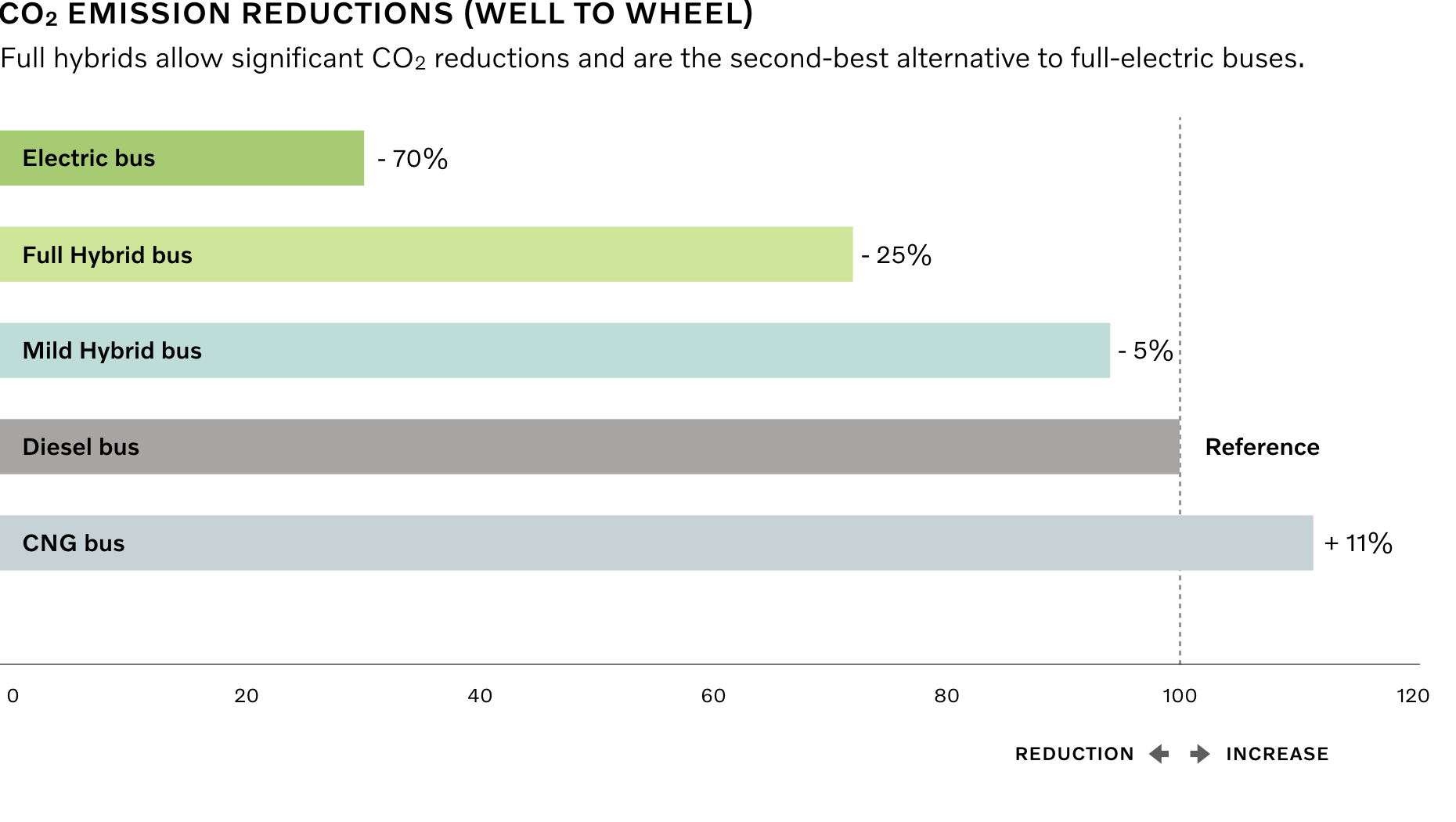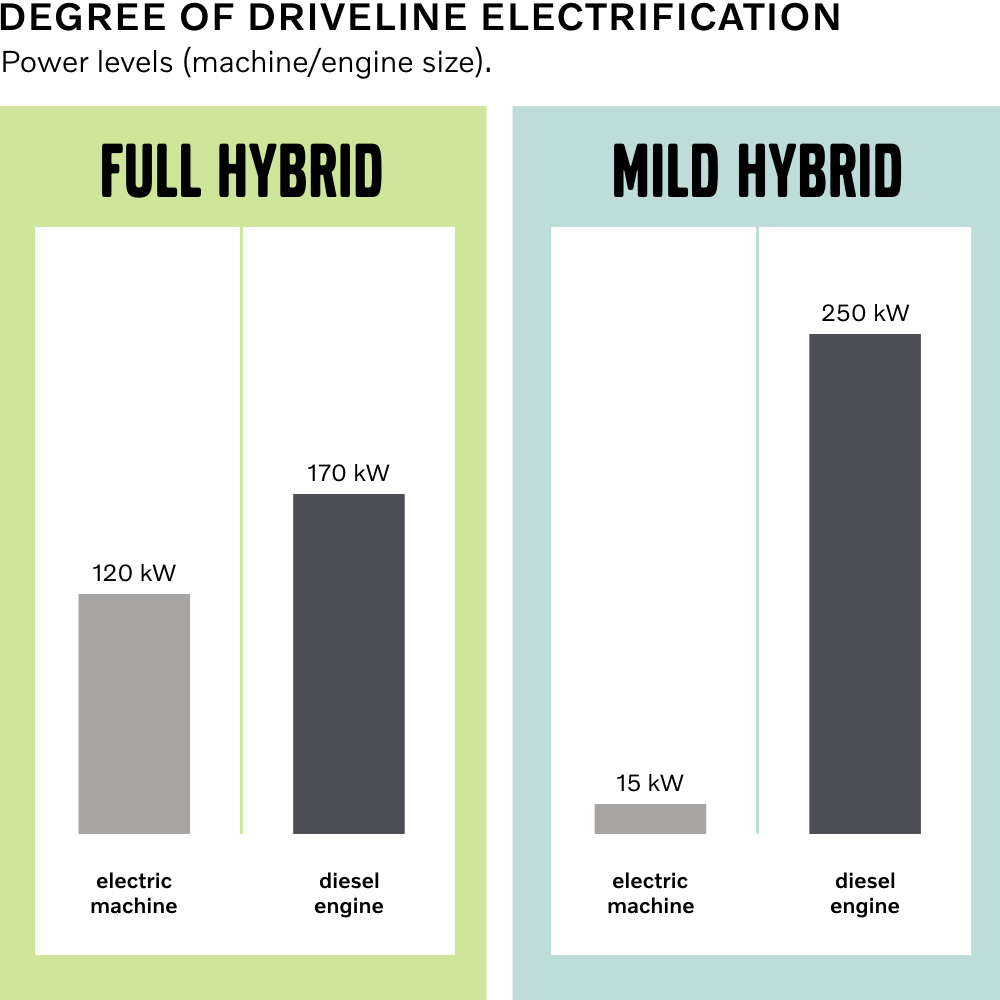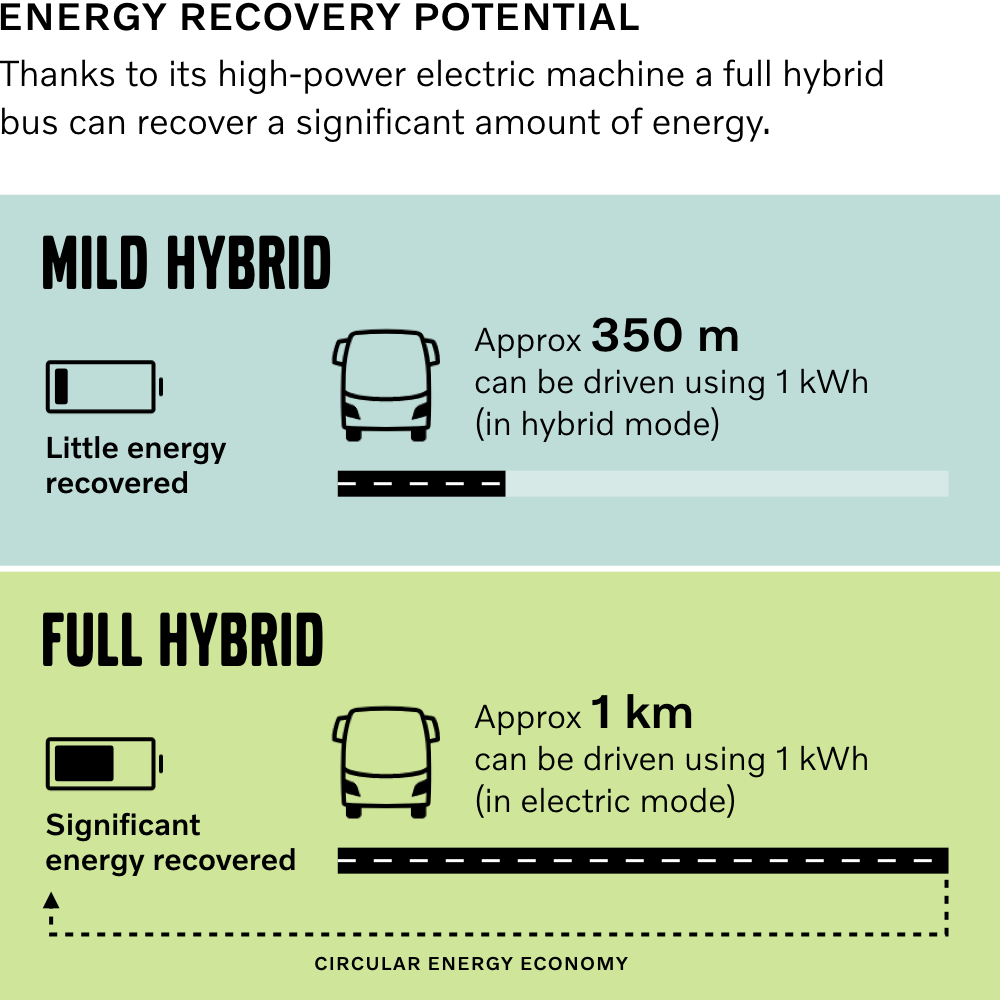Full hybrid technology can deliver part-time electric buses without operational constraints. It therefore plays an important role in the journey towards fully electric public transport. As a technically mature technology, it can also be boosted by connectivity and geofencing to further improve the environmental and societal credentials of full hybrid buses. Marcin Seredynski, electrification expert at the E-Bus Competence Center, Luxembourg, explains the benefits.
6 questions and answers on hybrid bus technology
1. The future of public transport is electric. Why do full hybrid buses have a role to play? >
3. What is the difference between a mild hybrid and a full hybrid bus? >
4. From an environmental perspective, why is it important to rightsize a hybrid system? >
5. How can connectivity and geofencing improve the electric performance of a full hybrid? >
The future of public transport is absolutely electric. However, due to several constraints, not least the wait for adequate charging infrastructure, the large-scale, robust, and cost-effective implementation of electric buses will be a progressive journey rather than an overnight transition. This means that in the years to come, fleet renewals will need to include alternative technologies alongside electric buses. Diesel, gas, and hybrid buses, including their alternative fuel variants, are all possible choices, but not necessarily equally beneficial. The limited availability of biofuels also restricts the various options and, in reality, in most cases the choice is between diesel, CNG, mild or full hybrids.
The latest generation of full hybrids can be enhanced by connectivity and geofencing and are now more electric than ever before. Typically, they can spend as much as 25 to 50 percent of their operating time, and 10 to 30 percent of the distance they drive, in quiet electric mode. Full hybrids also offer a targeted approach; their electric behaviour can be concentrated on curbing emissions and noise in city centres and at bus stops where it matters most. Therefore, in these emission-sensitive areas, full hybrids can be more electric than the average values suggest.
The latest generation of full hybrids are now more electric than ever before.
Furthermore, full hybrids offer a mature technology that has greatly improved in recent years and combines the benefits of electrification with the operational convenience and productivity of diesel buses. Put simply, because they use recovered kinetic energy to drive in electric mode, they do not require charging infrastructure and are therefore quick and easy to implement. You could even say that the goal of full hybrid technology is to exploit all the benefits of electrification that come without strings attached.
Due to the buzz around electrification, full hybrids have been somewhat overlooked. Now the urgent need to mitigate climate change means it’s time for them to receive the recognition they deserve as a very important bridging solution, where the implementation of large numbers of electric buses is simply not possible, given the current complexities and pace of electrification. By choosing a mix of both full hybrid and electric buses during this transitional period, there is no compromise on operational convenience and productivity, and there are clear environmental benefits.
To assess the actual environmental impact, we must use a well-to-wheel analysis. When compared to diesel buses, the typical reduction in greenhouse gas (GHG) emissions of full hybrids is around 25 percent. However, on routes that allow superior energy recovery, it can even be as high as 40 percent. As a result, depending on the mileage and operational conditions, a full hybrid reduces CO2 emissions by as much as 20 to 50 tonnes over the course of a year. If combined with biofuel, such as B100, a full hybrid can offer a reduction of around 60 percent when compared with a diesel bus.

Mild hybrids only offer a small reduction of around 5 percent in GHG emissions because of the low degree of electrification they offer, while CNG buses actually increase emissions. With electric buses, the reductions depend on the carbon intensity of the electricity, which varies greatly depending on the energy source. If the average EU electricity mix is assumed, reductions are around 70 percent.
We must look at the degree of electrification and its consequences if we really want to understand the difference. A full hybrid bus is equipped with a powerful electric machine (EM). The EM can both take on the role of an electric motor to put the bus in motion, but also works as an electric generator when recuperating energy from braking. The recovered energy is used to drive in pure electric mode, or to assist the diesel engine by providing part of its propulsion power (hybrid mode). An EM above 100 kW enables a full hybrid bus to offer all the environmental and societal benefits of electrification that come without the charging-related constraints.

So, the powerful EM not only delivers pure electric drive, it also allows the bus to recover a significant amount of energy. The combination of both leads to substantial reductions in energy use, noise and emissions of pollutants and GHG. Naturally, these technological enhancements come with a higher price tag.
A mild hybrid bus is less expensive because it is basically a diesel bus with a low voltage battery and low power electric machine (below 15 kW), mainly used to power electric components. This means that the bus cannot drive in electric mode and the energy recovery is very limited. Effectively, from an environmental perspective, a full hybrid bus is a part-time electric bus while a mild hybrid is just a more efficient diesel bus. Unfortunately, the two technologies are often confused.

When it comes to sustainability, rightsizing is about co-ordinating diesel and electric operations in conjunction with the battery to minimise environmental impact. This of course has implications on how a hybrid system should be designed.
The powerful electric machine in a full hybrid bus is the main reason it can effectively reduce GHG emissions, energy consumption and noise. It is also the enabler of other improvements that help to increase the reductions even more. For example, the diesel engine can be downsized, and the auxiliaries electrified.
When it comes to sustainability, rightsizing is about co-ordinating diesel and electric operations in conjunction with the battery to minimise environmental impact.
Rightsizing is also about choosing the right battery capacity. While ‘the bigger the better’ is to some extent true for electric buses that get most of their energy from the grid, this does not apply to full hybrids, as they harvest energy during operation. In fact, if we look at the battery state of charge at any time, we can see that a small capacity is needed to efficiently manage the recovered kinetic energy. Installing a large battery would be like pouring an espresso into a cappuccino cup. In theory, it is possible to charge a large battery by generating a high amount of energy from the diesel engine. This would allow extended electric drive capability, but at the expense of GHG emissions and fuel consumption. So, it’s technically possible, but not really environmentally sustainable.
Full hybrid buses harvest energy from a route, and instantly utilise it to help the bus operate in the most efficient way possible (by driving in electric or hybrid mode). However, the fact that buses drive on pre-defined routes creates enormous opportunities to optimise electric performance. By adding geofenced electric drive (zero emission zones) it is possible to improve the instant decision-making process of the hybrid system with a predictive approach that considers what will happen later on the vehicle’s route.
As a result, the usage of the recovered energy can be prioritised in locations where silent and zero-emission electric drive mode matters the most. However, it should be noted that where and how far a properly designed full hybrid bus can drive in electric mode depends on the route type, and specifically on its energy recovery profile.
…the fact that buses drive on pre-defined routes creates enormous opportunities to optimise electric performance
Thanks to increasing environmental focus, the market share of electric buses is growing every year. From an environmental and societal perspective, this is a very good thing, and there is no going back. However, in the next few years fleet renewals will not just be limited to electric vehicles, but also other technologies that do not have operating constraints. It will be a question of which product to choose in the “second-choice” segment. In the past, diesel and CNG vehicles were dominating this choice due to their much lower upfront price. But now that’s shifting as climate change has become more important than ever, and we know much more about the relevant technologies.
As they embrace the latest technologies, notably connectivity and geofencing, full hybrids can utilise recovered energy in noise and emission-sensitive areas
Therefore, interest in full hybrid technology for the second-choice segment is set to increase. This is already reflected in recent “diesel” tenders. Also, full hybrid technology has gone through a silent revolution in recent years. The latest generation of full hybrids from various bus manufacturers not only offer good capabilities to reduce GHG emissions when compared with diesel, mild hybrids and CNG buses. They are also much more passenger friendly and help to make public transport more attractive, because they are much quieter due to their electric behaviour. For this reason, they can contribute to the modal shift away from travelling by car in urban areas, indirectly further reducing GHG emissions. As they embrace the latest technologies, notably connectivity and geofencing, full hybrids can utilise recovered energy in a much better way, enabling more electric drive in noise and emission-sensitive areas. So, while the electric market will continue strong growth in the coming years, there will still be solid demand for full hybrids as the “second-choice” and next-best alternative.